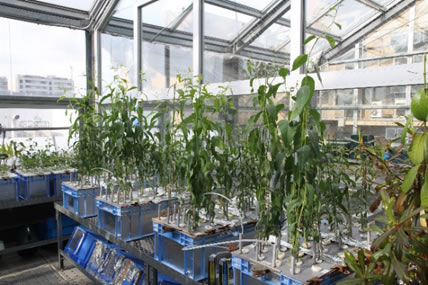Vegetative restoration of alkaline soils in Northeast China utilizing wild plants
In Heilongjiang and Jilin provinces in northeastern China, huge areas of alkaline salt-accumulating soils exist. In order to restore the vegetation in such areas, it is effective to use the wild plants that are native to the area. However, they do not germinate well and do not survive when their seeds are directly sown. Thus we made soil dumplings containing seeds and planted them. The plants grew well and the vegetation was recovering three years after the dumplings were sown.
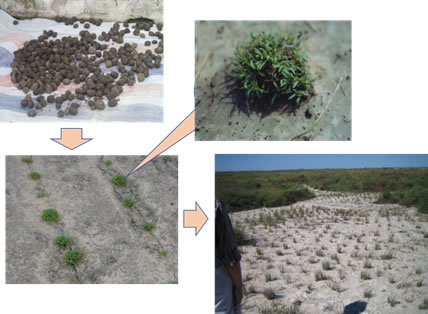
Vegetative restoration of degraded lands by utilization of mycorrhiza
Heavy metal mining not only directly damages vegetation and arable land, but also contaminates rivers and soils with untreated wastewater from ore washing and large amounts of sandy waste after ore washing that leaches heavy metals through weathering by rainwater. In the project, we aim to explore more effective methods of reforestation in mining wastelands by using mycorrhizal fungi to reduce toxic substances leaching from mining wastes.
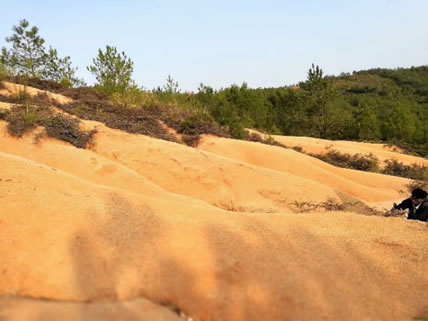
Development of environmental reforestation techniques for ex-coal mining sites
In order to obtain basic knowledge for establishing reforestation technology in coal mining sites, we will analyze the relationship between environmental factors and the survival and growth of planted trees in coal mining sites in East Kalimantan Province, Indonesia, and evaluate the characteristics of candidate tree species that are resistant to inhibiting factors through cultivation experiments at laboratory.
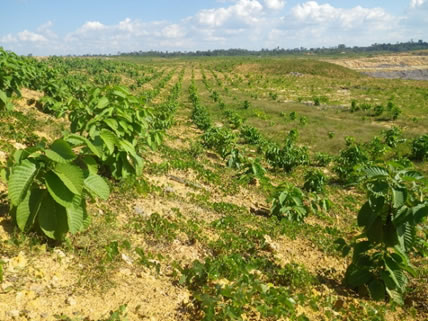
Development of environmental reforestation techniques for degraded tropical swamp areas
The aim of the project is to develop an environmental forestry technology with low energy inputs to create forests in degraded lowland areas of tropical Asia, where soil degradation is occurring. In order to establish an environmental reforestation technology for flooded lowland areas, we are developing seedling nursery methods through accumulating our knowledge of the effects of pretreatment of flooding on seedlings.
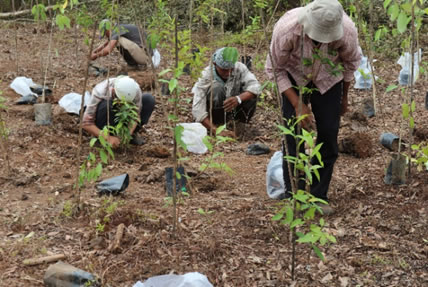
Reducing carbon dioxide emissions from tropical peat swamps through peat conservation and reforestation
Targeting tropical peatlands which have become a considerable source of CO2 emissions due to inappropriate development, the project aims to demonstrate field experiments to bring those developed peatlands back to a sink of CO2 through reflooding and planting of flood-tolerant tree species. Utilization techniques for the produced woody biomass will be developed as well. The final goal is to present a comprehensive system from peat conservation and reforestation to the optimum use of biomass to confirm the emission reduction potential and to clarify the feasibility of the system.
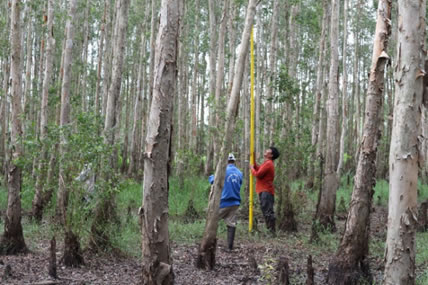
Adaptation of biological production systems in rural Asia to climate and ecosystem changes
The project aims to quantitatively assess the resilience of rural communities in Asia to climate and ecological changes and other socio-economic vulnerabilities, and to present options of measures to comprehensively strengthen the resilience of rural regions. The focus is on the establishment of biological production systems that improves both the quantity and quality of agricultural production and on the establishment of sustainable developmental strategies for rural communities. Rural areas in Vietnam, Indonesia, and Sri Lanka are the main target area.
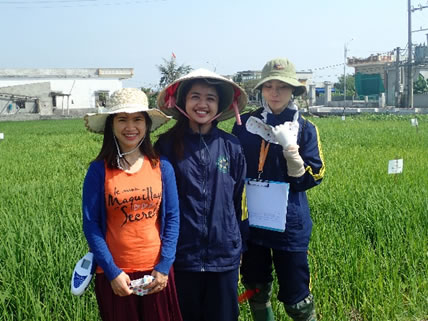
Establishment of a water-saving cultivation system using newly developed rice genotypes, designed with the goal of developing a resource-saving rice cultivation system
Population growth, industrialization and changes in precipitation patterns due to climate change, have led to the need for more efficient water use in the agricultural sector. The project aims to establish resource-use efficient rice production systems with savings of water and fertilizers through improvements of genetics and breeding, and irrigation and cultivation methods, especially in Colombia.
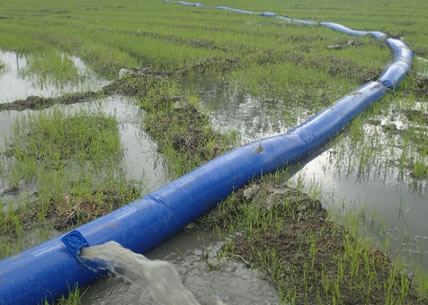
Biodiversity and ecosystem homeostasis mechanisms in tropical coastal ecosystems
The ecosystems with rich biodiversity in the coastal areas of Southeast Asia are currently being rapidly degraded due to a combination of anthropogenic impacts and global climate changes. In the project, we aims to assess genetic diversity and elucidate the mechanisms of ecosystem maintenance and connectivity between populations of seagrasses and benthic animals that grow in coastal ecosystems, and to make the proposals for the rational establishment and maintenance of marine protected areas.
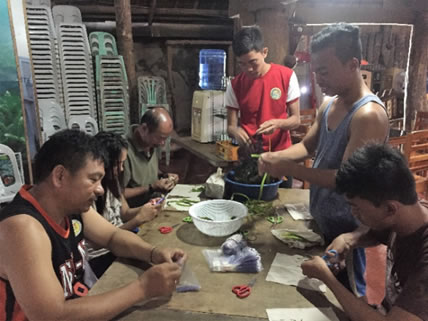
Biodiversity, taxonomy and phylogeny of microalgae in the Western Pacific
In order to mitigate negative impacts caused by harmful microalgae, such as fish mass mortalities and shellfish poisonings, unambiguous identification of the causative harmful microalgal species is important. Since harmful microalgal species have been newly detected from the western Pacific coasts, taxonomic and phylogenetic studies on various microalgae, in particular to the harmful species, are carried out to provide information of distinctive characters of harmful species.
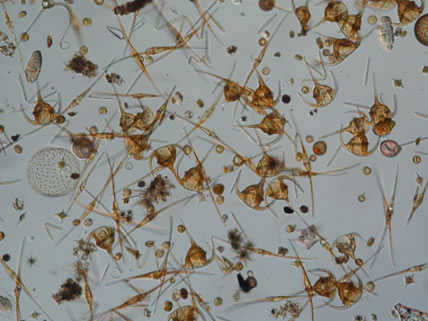
Sustainability of rain-fed rice cultivation in tropical Asia
The project aims to improve productivity of rainfed agriculture through focusing on micro-variations within the regions of contrasting water environments and revealing their limitations and potentials of agricultural production. The project will clarify the heterogeneity of paddy environments, the multi-functionality of agro-ecosystems, the negative environmental loads, and the spatial information on adaptive management of farmers, and pursue productivity and sustainability of rainfed lowlands. Rainfed rice ecosystems of the Indochina Peninsula and other regions are focused where rice productivity has been lower.
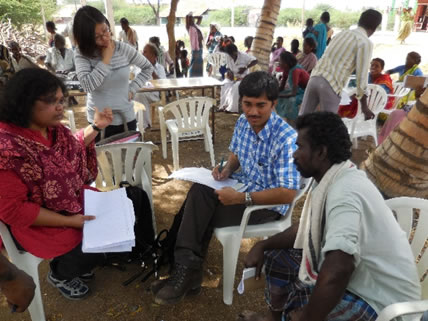
Distribution and ecophysiology of harmful microalgae in Southeast Asia
Distribution of harmful microalgae and the environmental conditon for red tide formation in the Southeast Asian coasts, where fish kills and shellfish poisoning due to harmful microalgae are frequently recorded and expanded, are investigated under international collaboration. For better understanding of the occurrence and proliferation of harmful microalgae, distribution and ecophysiology of harmful algal bloom species are examined, which will be applied to mitigation of negative impacts caused by harmful algal blooms.
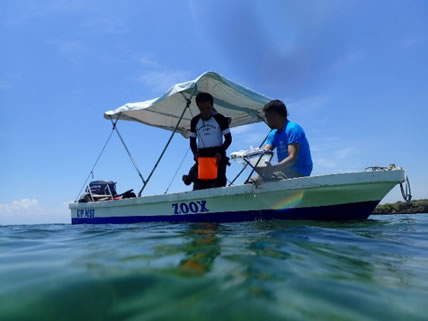
Methodology establishment for environment marketing policy
We aim to establish a new research field on wood utilization system through the assessment of the environmental, economic and social impacts of wood use, analysis of domestic and overseas markets and supply chains, and evaluation of policy, education, human resource development and consumer understanding.
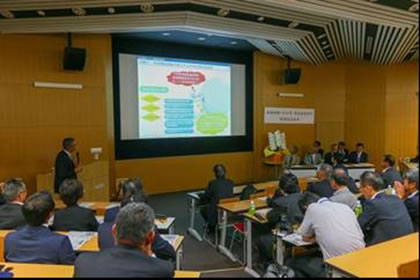
4Genetic Resources Development
To fulfill the sustainable biological production providing superior effects of environmental restoration and conservation, we explore useful genetic resources, such as microorganisms, indigenous crop varieties and stress-tolerant plants. Moreover, we seek to develop effective utilization methods for those resources through an understanding of their tolerance mechanisms.
Drought resistance mechanisms in crops
About half of the world's rice cultivation areas are rainfed without irrigation, where yield reduction and disturbance of scheduled farm operations become serious problems due to drought. Crop improvement to enhance drought resistance has a great potential for their solutions. The project aims to develop drought resistance screening methods for crops such as rice, a staple food in monsoon Asia, to elucidate their drought resistance phenotypes and quantitative loci.
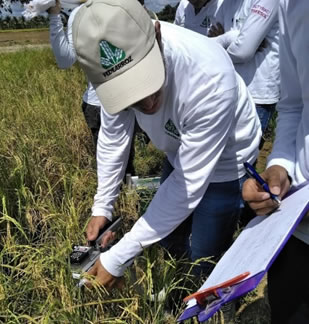
Mechanisms of mushroom formation in ectomycorrhizal fungi
Ectomycorrhizal fungi establish symbiotic associations with the roots of the major trees which enhances water and nutrient uptake of host plants, and in turn, the symbionts receive carbohydrates from the host plants. Many ectomycorrhizal fungi belong to Basidiomycetes and produce fruiting bodies (mushrooms), including Matsutake, an expensive edible mushroom popular in Japan. In the project, we are studying on the mechanisms of mycorrhizal formation and fruit-body formation of ectomycorrhizal fungi with the aim of artificially cultivating edible ectomycorrhizal mushrooms.
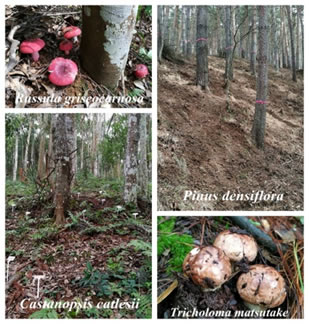
Isolation and analysis of the plant genes involved in the tolerance of environmental stresses
We are trying to isolate genes involved in environmental stress tolerance from a grain crop, pearl millet. Pearl millet is extremely drought tolerant and heat tolerant and can be an excellent source of stress tolerance-related genes. The goal is to apply the isolated genes to pearl millet itself and other grain crops, such as rice, to enhance their stress tolerance. We also conduct basic research using a model plant, Arabidopsis thaliana.
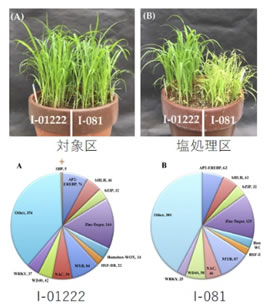
Mechanisms of wild plants exhibiting high tolerance to alkaline soils
There are wild plants that can grow in poor conditions where crops cannot grow. We aim to elucidate the mechanisms of stress tolerance in such wild plants to help improve crop tolerance. Puccinellia tenuiflora (Chinese name: 碱茅, which means 'alkaline grass') is a Gramineae plant that has high alkaline salt tolerance. By introducing genes isolated from this plant into rice, the salt tolerance of the rice was improved.
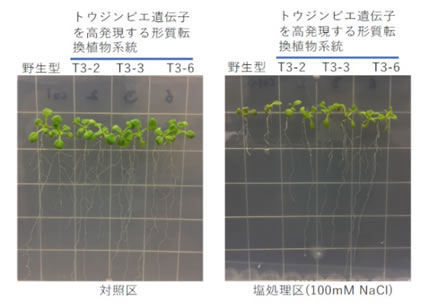
Hypoxia tolerance mechanisms of trees
It is possible that trees, which are wild plants, have functions that experimental plants and crops do not, and the physiological study of resistance mechanisms in trees with environmental stress tolerance is of great significance. The aim of the project is to elucidate responses of trees to hypoxic stress in the rhizosphere and the mechanisms of stress tolerance in flooded or undrained conditions by combining physiological analysis in the laboratory with environmental analysis and ecophysiological measurements in the field.
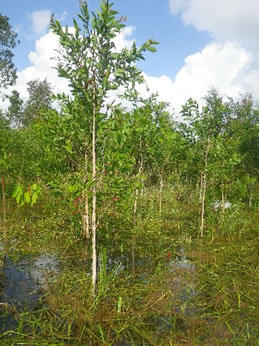
Environmental stress responses of trees
The aim is to create forests, which are systems that realize autonomous production through biogeochemical cycles, on abandoned land due to in appropriate development and convert them to land use for sustainable production. We focus on environmental stresses that inhibit the growth of trees during forestation, explore the mechanisms of environmental responses of trees to these stresses, and consider how to utilize them in order to pursue methods for forestation in degraded lands.
